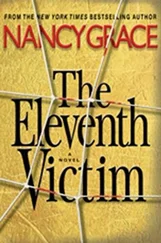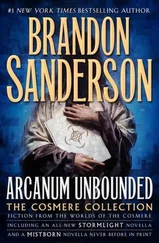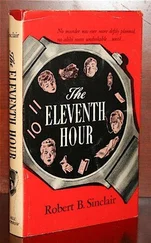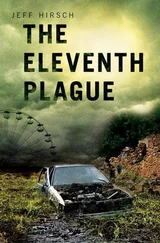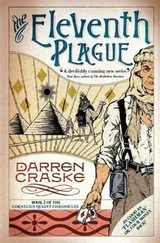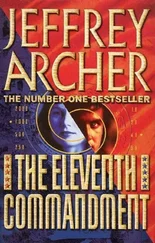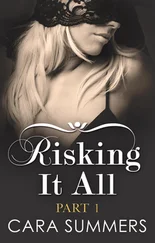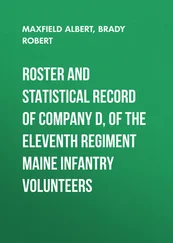Anthony Summers - The Eleventh Day
Здесь есть возможность читать онлайн «Anthony Summers - The Eleventh Day» весь текст электронной книги совершенно бесплатно (целиком полную версию без сокращений). В некоторых случаях можно слушать аудио, скачать через торрент в формате fb2 и присутствует краткое содержание. Жанр: Старинная литература, на английском языке. Описание произведения, (предисловие) а так же отзывы посетителей доступны на портале библиотеки ЛибКат.
- Название:The Eleventh Day
- Автор:
- Жанр:
- Год:неизвестен
- ISBN:нет данных
- Рейтинг книги:3 / 5. Голосов: 1
-
Избранное:Добавить в избранное
- Отзывы:
-
Ваша оценка:
- 60
- 1
- 2
- 3
- 4
- 5
The Eleventh Day: краткое содержание, описание и аннотация
Предлагаем к чтению аннотацию, описание, краткое содержание или предисловие (зависит от того, что написал сам автор книги «The Eleventh Day»). Если вы не нашли необходимую информацию о книге — напишите в комментариях, мы постараемся отыскать её.
The Eleventh Day — читать онлайн бесплатно полную книгу (весь текст) целиком
Ниже представлен текст книги, разбитый по страницам. Система сохранения места последней прочитанной страницы, позволяет с удобством читать онлайн бесплатно книгу «The Eleventh Day», без необходимости каждый раз заново искать на чём Вы остановились. Поставьте закладку, и сможете в любой момент перейти на страницу, на которой закончили чтение.
Интервал:
Закладка:

Copyright © 2011 by Anthony Summers and Robbyn Swan
All rights reserved.
Published in the United States by Ballantine Books, an imprint of The Random
House Publishing Group, a division of Random House, Inc., New York.
“I don’t believe for a minute that we got everything right .
We wrote a first draft of history.”
—LEE HAMILTON,
vice chairman, 9/11 Commission
AUTHORS’ NOTE
OVER THE YEARS, THE EVENT TO WHICH THE WORLD GAVE THE BRIEF name “9/11” has burgeoned into a universe of facts and factoids. Our approach to the writing of this book was to build a chronology, which eventually ran to well over a thousand pages, to gather information from a multitude of sources, including published material in both paper and electronic form, and to conduct interviews of our own. We read as deeply as possible the many thousands of pages of staff reports, original memoranda, and other 9/11 Commission records that began to be released as of 2009.
Additional information on numerous points can be found in the Notes and Sources section at the back of the book. These are linked to the text by page number.
For ease of reading, we have adopted a single standard for Arabic names that are rendered differently in different texts. The name “bin Laden,” for example, can be found elsewhere as “bin Ladin” or even “ben Ladin,” and the organization associated with him as “al-Qaeda,” or “al Qida”—and more. We have stuck to “bin Laden” and “al Qaeda.”
The full rendering of many Arab persons’ names is lengthy, and we have in many cases shortened them. After a full first mention, for example, “Khalid al Mihdhar” becomes just “Mihdhar.” We render “Ramzi bin al-Shibh,” as have many other texts, simply as “Binalshibh.” Though perhaps not strictly correct, or satisfactory to the purist, this makes for smoother reading.
Our aim has been to make readable sense out of a kaleidoscopic story, to offer rational explanation where there has been confusion or unnecessary controversy, and to serve history as well as possible.
A.S. R.S.
May 2011
PREFACE
TEN YEARS ON, MEMORY AND LOSS. WHERE TWO WONDERS OF THE modern world once soared high over the city, two great cascades feed reflecting pools of shimmering water. The abyss into which it flows is now a hallowed place of remembrance. Pilgrims about to descend to the underworld, the underworld of what once was the World Trade Center, will pass a ribbon of names etched into parapets of bronze.
They identify those killed in New York City on September 11, 2001: the 206 passengers and crew aboard the three planes that were used as missiles that day; the forty who died when a fourth airliner fell from the sky in Pennsylvania; the 2,605 office workers and visitors and would-be rescuers known to have died in and around the Trade Center; and the 125 men and women who died at the Pentagon in Washington. Included, too, are the names of the six people killed eight years earlier, in 1993, in the first attempt to bring down the towers with a truck bomb.
The memorial names 2,982 men, women, and children as of the spring of 2011. The true tally of 9/11 fatalities, however, is incomplete. Some of those who labored in the rubble of the fallen towers have died since, agonizingly slowly, from respiratory disease contracted in the fire and poisoned dust of the place they called Ground Zero. Some nineteen thousand others are reported to be sick and receiving treatment. By one prediction, disease will eventually cripple and kill as many again—more perhaps—as died on the day of the attacks.
We do not know, shall never know, how many have died in the far-off wars that followed the onslaught launched that September day. Fighting men aside, the vast majority of the dead have been civilians: unknown thousands—conservatively, many tens of thousands—of men, women, and children killed in Afghanistan and in Iraq.
Of the three thousand who died on 9/11 itself, fewer than half have graves. Some bodies were consumed by fire, others reduced to minute fragments of mortality, morsels of burned bone, decaying flesh, a single tooth with a silver filling. To this day, forensic pathologists are confronted by a monstrous human jigsaw, one they know they will never complete.
Consider five of the names that are etched, lettered in bronze, above the curtain of water at the 9/11 memorial.
Jimmy Riches, a New York firefighter, died in the lobby of the North Tower. His father, James, himself a Fire Department battalion chief, recovered his son’s mangled body months later.
Donald McIntyre, a Port Authority police officer, also died at the Trade Center. His handcuffs, recovered at the scene, were given by his widow to a colleague assigned to hunt down terrorists in Afghanistan.
No identifiable remains were ever found for Eddie Dillard, an American Airlines passenger who died at the Pentagon. His widow, by odd happenstance, had been American’s base manager in Washington, D.C., when his plane took off that day.
Ronald Breitweiser, a money manager, died in the South Tower of the Trade Center. Only his arms and hands were recovered, identified by fingerprints—and by his wedding ring, which his widow now wears.
Only part of a leg and one foot were found—six years later—to account for Karen Martin, chief flight attendant on the plane that plunged into the North Tower. Attendant Martin was probably the first person harmed by the hijackers on 9/11.
• • •
SOMETHING ELSE WAS LOST that day, something precious that touches on the stories of all the thousands who have died. The Greek tragic dramatist Aeschylus, twenty-five centuries earlier, understood well what it was. “In war,” he wrote, “the first casualty is truth.”
James Riches worked in the rubble for months, motivated in part by the hope of recovering his own son’s dead body. He labored, like thousands of others, buoyed by the assurance of the Environmental Protection Agency, that the air in Lower Manhattan was safe to breathe. Today, no longer a fire chief, Riches Sr.’s health is irreparably damaged, his lung capacity reduced by 30 percent.
Like so many others, meanwhile, Riches wants vengeance against those who killed his son. The Saudi exile Osama bin Laden, said to have ordered the 9/11 attacks, became—in the West—a constant demon, a symbol of the dark forces of terror. President George W. Bush at first promised to get him “dead or alive,” only to backtrack months later and say, “I don’t know where bin Laden is … and really don’t care. It’s not that important.”
In 2009, at the White House, Riches and others met Bush’s successor, Barack Obama. “I pulled out Jimmy’s bracelet and funeral mass card and gave them to him,” the former fire chief said later. “I told him that I’m frustrated that I haven’t seen justice for my son Jimmy.… Please capture Osama bin Laden.” Obama promised “swift and certain justice.”
Police officer McIntyre’s handcuffs, engraved “Mac,” were later snapped on to the wrists of a fugitive named Abu Zubaydah—a native of Saudi Arabia like bin Laden. Imprisoned ever since, Zubaydah remains today the subject of serious controversy. For U.S. interrogators treated him with extreme brutality, using duress that has been defined by the International Committee of the Red Cross, and many others, as torture.
Eddie Dillard’s widow, Rosemary, for all her grief, was one of a number of bereaved family members incensed by the ill treatment of prisoners and by plans to try them before military tribunals. “The secret and unconstitutional nature of these proceedings,” they said, “deprives us of the right to know the full truth about what happened on 9/11.”
Читать дальшеИнтервал:
Закладка:
Похожие книги на «The Eleventh Day»
Представляем Вашему вниманию похожие книги на «The Eleventh Day» списком для выбора. Мы отобрали схожую по названию и смыслу литературу в надежде предоставить читателям больше вариантов отыскать новые, интересные, ещё непрочитанные произведения.
Обсуждение, отзывы о книге «The Eleventh Day» и просто собственные мнения читателей. Оставьте ваши комментарии, напишите, что Вы думаете о произведении, его смысле или главных героях. Укажите что конкретно понравилось, а что нет, и почему Вы так считаете.

